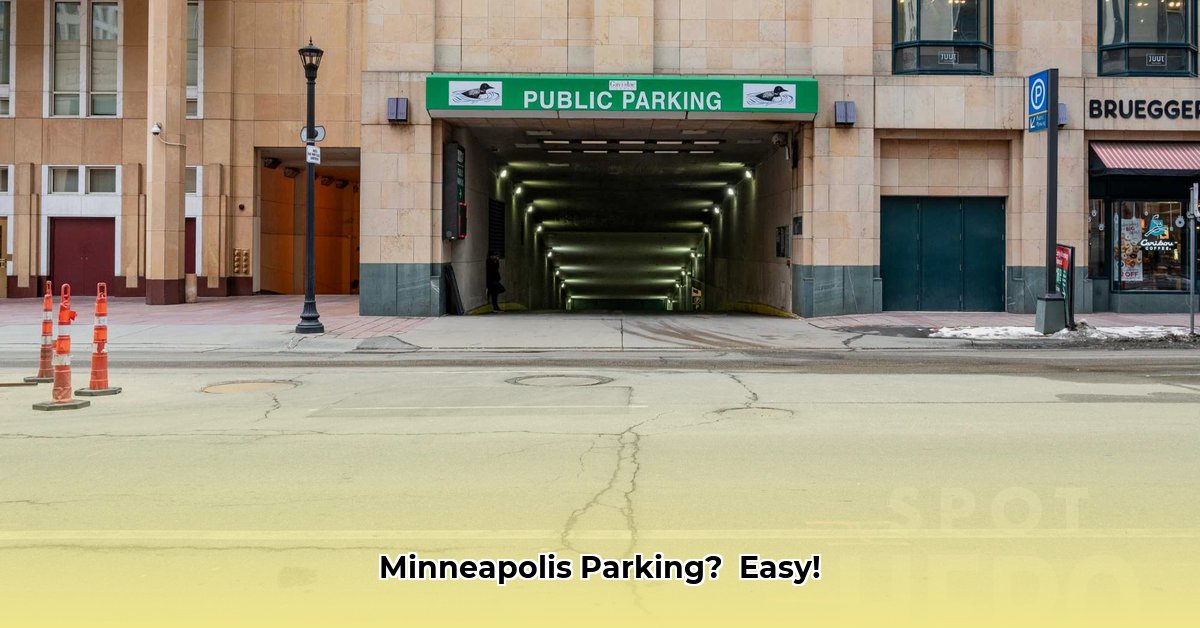
Navigating Minneapolis City Center Parking: A Comprehensive Guide
Finding parking in Minneapolis's bustling city center can be a challenge. This guide clarifies the options, addresses common frustrations, and explores how technology is transforming the parking experience, from finding a spot to paying the fee. We'll delve into the current system, highlighting both its strengths and weaknesses, and look toward the future of smart parking in Minneapolis.
The current Minneapolis parking system offers a mix of surface lots, parking garages, and premium City Center options, each with varying prices and levels of convenience. However, a lack of complete integration across these options creates inefficiencies. Imagine a jigsaw puzzle with many pieces, but some are missing, making the whole picture unclear. This fragmented system can lead to difficulties for drivers. For example, a lack of readily available, real-time information on parking availability can lead to significant time wasted searching for a space – time that could be spent more productively.
Understanding the Current Parking System
The city's mobile parking app aims to streamline parking, providing real-time information and simplified payment. However, comprehensive data on app usage and its accuracy in reflecting real-time availability are still being gathered. This data gap hinders a complete understanding of the system's effectiveness. Further research will help refine the app and enhance its utility. The ongoing research aims at collecting usage data to improve the app's functionality and overall user experience. This is crucial for tailoring the system to the needs of Minneapolis residents and visitors.
Finding Your Parking Spot: A Step-by-Step Guide
Finding a parking space downtown can be made easier with a strategic approach:
Utilize the City's Parking App (If Possible): Before arriving downtown, check the app for real-time parking availability. Remember, the app's accuracy can vary depending on the time of day and data updates.
Plan Your Trip Strategically: Consider factors like events and peak commuting hours, which significantly affect parking availability. Planning your arrival time can save you significant time and frustration. Exploring alternative transportation options, such as public transport, is also worthwhile.
Consider Location and Cost: The closest spot isn't always the best value. Slightly more distant, less expensive options might save you money without adding substantial travel time. Weighing convenience against cost is key.
Pay Close Attention to Signage: Parking rates vary across locations and depend on the duration of your stay (daily, monthly, event parking). Read signage carefully to avoid unexpected charges. Familiarize yourself with available payment options (credit card, mobile payment).
Embrace Technological Advancements: The city is developing a more integrated system to improve the parking experience. The ideal scenario involves a simplified process using a centralized mobile app, allowing users to reserve, pay for, and easily find a parking space. This future-oriented approach aims for seamless integration with the city's overall transportation network.
Enhancing the Minneapolis Parking Experience: Present and Future Goals
A core challenge lies in implementing a comprehensive, data-driven parking management system. This system would gather real-time data on space availability, employ dynamic pricing strategies (adjusting prices based on demand), and use predictive analytics (forecasting demand based on various factors). Such a system is key to both optimizing parking resources and providing a superior user experience. It offers opportunities to generate additional revenue while improving convenience.
Short-Term Goals (Within 1 Year): The immediate priority is to gather complete data from all city-owned parking facilities. Improving the mobile app's functionality and providing real-time updates with estimated wait times is crucial for improving user satisfaction.
Long-Term Vision (3-5 Years): The city aims to establish a city-wide "smart parking" system. This system would integrate real-time data, dynamic pricing, and predictive analytics for a fully optimized parking experience. It also involves establishing partnerships with app developers to enhance user-friendliness and ease of use.
Smart Parking: Advantages and Challenges
A smart parking system offers many advantages:
- Improved Efficiency: Less time spent searching, optimized resource allocation, and fewer empty spaces.
- Potential Cost Savings: Dynamic pricing could lower costs during off-peak hours and maximize revenue for the city.
- Enhanced Convenience: A streamlined and user-friendly parking experience.
- Environmental Benefits: Reduced traffic congestion leads to decreased emissions and a smaller carbon footprint.
However, challenges remain:
- Data Privacy: Robust data security and privacy measures are essential.
- Technological Investment: Significant financial investment is needed to build and maintain a sophisticated smart parking infrastructure.
- System Integration: Seamlessly connecting the app with other city systems requires careful planning and coordination.
The future of parking in Minneapolis's city center is bright. By effectively leveraging data, building a unified system, and focusing on user needs, the city can transform parking from a stressful experience into a convenient and smooth part of daily life. The journey towards a more efficient and user-friendly system is ongoing, and the vision for a "smart parking" system is a significant step in that direction.